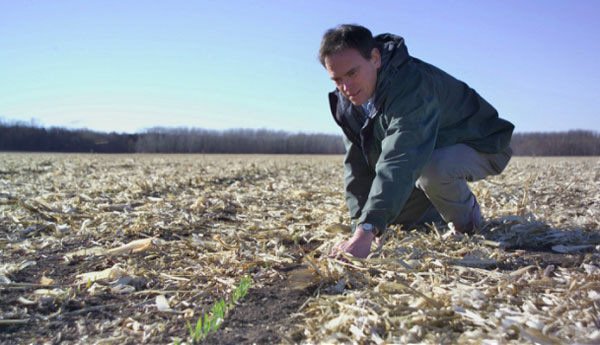 Many folks’ idea of gardening is tossing a few seeds on the ground, maybe half-heartedly kicking some dirt overtop, and somehow welcoming a burgeoning load of crops come harvest time. Those same gardeners will bemoan the fact that they simply don’t have a green thumb, when, at the prescribed time, nothing grows. As it turns out, growing greens takes a little more than simply planting seeds. Read on for a few tips on preparing your garden for consistent growth.
Many folks’ idea of gardening is tossing a few seeds on the ground, maybe half-heartedly kicking some dirt overtop, and somehow welcoming a burgeoning load of crops come harvest time. Those same gardeners will bemoan the fact that they simply don’t have a green thumb, when, at the prescribed time, nothing grows. As it turns out, growing greens takes a little more than simply planting seeds. Read on for a few tips on preparing your garden for consistent growth.
Know Your Soil
Your soil is where your plants will take literal root and, as it happens, no two soils are fully identical. Knowing your soil’s makeup is an incredibly important starting point to have any sort of real understanding of how to care for your plants. Clay-type soil, for instance, is dense and holds nutrients well, but drains slowly, and thus can be prone to drowning a plant. Sandy soil, meanwhile, drains much better, but does not hold nutrients as long. Silty ground contains densely packed particles inhibiting drainage, while loamy soil provides the best balance, with both good drainage and nutrient content. To start, therefore, take an honest look at your ground, and figure out what you’re dealing with.
Soil Prep: Water
Classification out of the way, you need to make sure your soil has enough water content to support plant life. Soil should be about 25 percent water, so if your soil is sandier, make sure to keep it fairly damp. For a more clay-like soil, on the other hand, make sure not to drown it, as it will hold water for a while.
Tilling
Sandier soil will need less aggressive tilling, while clay will need more, but the rule of thumb is generally the same in either case. Loosen the top 12 inches of soil, either with a hand tiller or a larger tractor-driven attachment, depending on the size of your garden.
Nutrients
In the same vein, all good soil needs a high nutrient content. To up your nutrients, add some composting material on top. Sandy soil needs a good 4 inches of material, while clay only needs 3; silty mix just an inch or two. Try to avoid walking on the soil, or doing anything to compact it down. Instead, mix this in with your freshly tilled soil. This will also help with drainage.
If you want to get scientific about it, you can even test your soil with an agricultural test kit. Most vegetables prefer a soil with a pH level between 6.0 and 7.0. To raise pH, work lime into the soil, or use sulphur dust to lower it. Be warned, however, changing the pH of a soil in any quantifiable way generally takes about a season.
Fertilizer
All the steps up until this point should have been done several weeks before planting, to allow earthworms and nutrient-producing microorganisms enough time to reestablish themselves beforehand. Fertilizing, however, should be done just prior to seeding time. Which type is up to you, but a general purpose 10-10-10 fertilizer usually works just fine. Check the bag for exactly how much per square foot to use, but be sure to turn it into the top 8 inches of soil.
Planting
From here, the process is pretty simple. Simply smooth the soil over and water it until it looks wet, but not waterlogged. Then, sow your seeds in the manner dictated on the packet (or, if there is no packet, check in with the experts at your local nursery to determine the best way to plant your particular vegetable).
Rocket science? No, not exactly, but nonetheless, preparing to grow your own food certainly takes more preparation than meets the eye. Following the steps above, however, should ensure your thumbs turn a nice shade of green for years to come.
A humble homesteader based in an undisclosed location, Lars Drecker splits his time between tending his little slice of self-sustaining heaven, and bothering his neighbors to do his work for him. This is mainly the fault of a debilitating predilection for fishing, hunting, camping and all other things outdoors. When not engaged in any of the above activities, you can normally find him broken down on the side of the road, in some piece of junk he just “fixed-up.”
